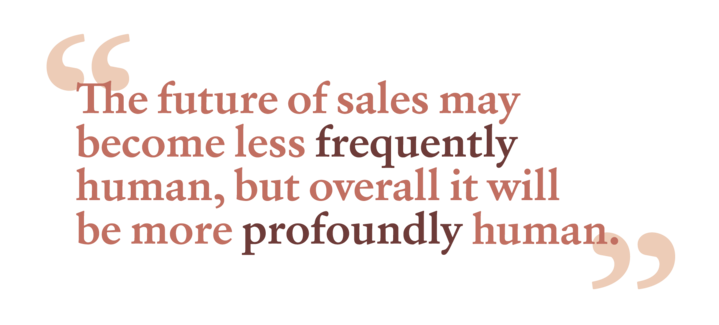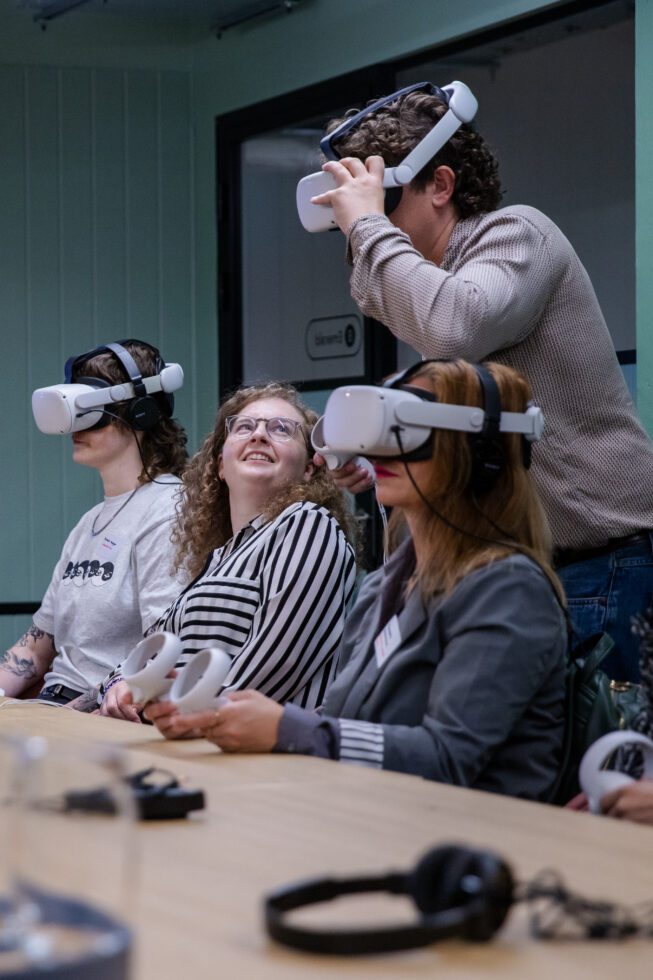Receive our newsletter
Keep up to date with the latest articles
Subscribe hereYou are using an outdated browser. Please update your browser for a better experience
We sat down with Daniel Mogues to understand how AI is reshaping the future of sales.
Daniel currently works as a Digital Enablement Specialist for the Smart Infrastructure section of Siemens — one of the world’s largest engineering and industrial manufacturing companies. Over the past 25 years he has worked for small, mid-size and large companies in many countries filling different sales and technology-related roles, from frontline sales manager to sales enablement, from channel management to business excellence.
As long as I can remember, I always found myself somewhere at the intersection of technology and sales.
I started out over 25 years ago, in one of my first roles as a technical sales specialist (i.e. assisting sales reps with technical know-how during their pitches) at an IT-company whose products were based on something called ‘convolutional neural networks’ — one of the predecessors of today’s Artificial Intelligence. But over time the sales role itself caught my interest, and I transitioned more and more away from the technical to the purely sales side of the business, later also managing and training sales teams.
I have now come back full circle to the technical side and work in a newly created, very exciting department called “Digital Enablement & Process Innovation”; the first of its kind in our company. Here, we assist and advise our sales, service, customer success, and customer support teams in over 45 countries on how to best utilise technology and how to structure their processes, so as to become more competitive in today’s (and more importantly: tomorrow’s) world.

Well, let us first agree: AI will definitely and fundamentally reshape the future of sales!
The ‘how’-part is where we can only speculate. My personal view is that it will be quite disruptive at first and for many businesses it will take some time to adjust to the changes ahead: technology will relentlessly strip away routine tasks and gobble up low-level activities before our very eyes, leaving businesses with a choice to either quickly adapt and lean into speed and scale or be left behind by their competition.
Sales itself will become, on the one hand, more predictive, data-oriented, and highly efficient, but on the other, far more personalised, bespoke and customer-centric. A ‘one size fits all’ message just won’t cut it.
Sales professionals will no longer spend as much time — if at all — on manual tasks like prospecting, data entry, or lead qualification (which today constitute a majority of their time and effort). Instead, they will focus on building and maintaining relationships, creatively solving complex problems, and filling the role of trusted advisors to their customers. But while automation will streamline workflows, the human element —empathy, creativity, and critical thinking — will become even more valuable and sought after attributes by customers.
So, if you ask me: the future of sales may become less frequently human, but overall it will be more profoundly human.
I would advise them: take a page from the tech companies’ playbook! In my view, the successful sales teams of the future will increasingly resemble the agile tech organizations of today — they will be highly data-driven, experiment-oriented, and fully digitally integrated.
Sales will heavily rely on real-time analytics, AI-assisted customer insights and forecasting, as well as on 360-degree aggregation of customer data from both internal and external (public) data sources.
This transformation means businesses will need to look not only for product knowledge, persuasion, and relationship skills (as is mostly done today), but increasingly hire for analytical, digital, and adaptive capabilities too, turning their organisations into rapidly innovating, adaptive sales/technology hubs.

One of the most striking mistakes I see in businesses everywhere is a surprisingly sticky relic of our early 20th century approach to business: the siloed department.
Even today, in this third decade of the 21st century, many businesses still have their customer-facing teams structured in neatly separated subdivisions; separating sales, marketing, customer support, and customer success from one another with only little collaboration between them. This inevitably leads to misaligned strategies, unnecessary inefficiencies at the interfaces, and a rather incoherent customer experience.
Such an organisational setup will just not be viable anymore in the data-driven, digitally enabled world of tomorrow. In this ‘not-so-distant’ future (and let’s be honest, we are talking about the next 3-4 years…), it will be indispensable for uber-close collaboration and instant exchange of data to occur across all customer-facing teams — who will then not be their own separate departments anymore but something closer to multifunctional ‘task-forces’ or ‘squads’, working together as one integrated customer-serving hive-mind, with each ‘squad’ cross-pollinating and enriching the others with their data and insights.
I have heard this question asked a lot, even in my own organisation. But it is based on a flawed and outdated premise (stemming for the early days of digitalisation): that digital automation and human engagement stand in mutually exclusive opposition to one another.
The truth is quite the opposite. If implemented correctly, AI and automation will, on the contrary, not hamper but enable more high-quality and more empathy-based human engagement.
When the necessary but repetitive, predictable tasks can be handled by virtual agents and automation, the human agents can focus with much more time and attention on interactions in the customer journey that require emotional intelligence, human judgment, and creativity, providing the customer with a far superior experience at the most crucial moments.
While AI-automation can deliver speed, accuracy, and personalisation at scale, our highly skilled empathetic colleagues can step in for complex decisions or emotional conversations. The secret, however, lies in designing the customer journey in a way that feels seamless to the customer, with fleeting, nearly imperceptible handovers between AI and humans.
Companies that succeed will use technology as an enabler, giving humans more time to build trust, solve nuanced problems, and create the kind of personal connection that drives customer satisfaction and brand loyalty.
Operation not possible, please try again later